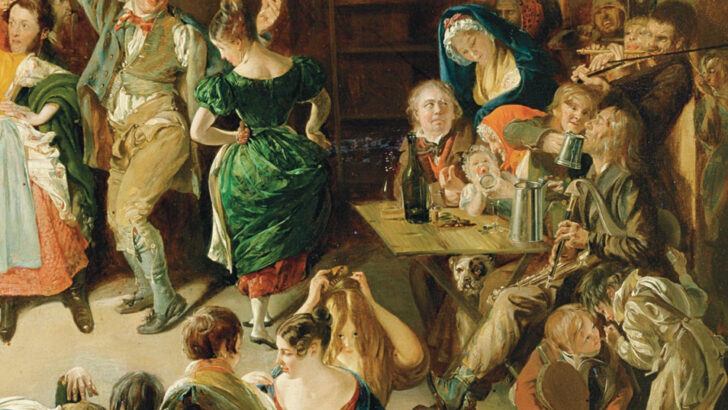The Companion to Irish Traditional Music
edited by Fintan Vallely (Cork University Press, €69.00 / £65.00 / $75.00 )
This is a magisterial study of Irish Traditional Music. At the outset the author defines this genre of music. For him it is a body of melody, song and dance and associated activities that comes from the period before recorded and broadcast music. It has distinct features which are uniquely of Ireland but it has borrowed forms and practices from our neighbouring island as well as from Europe. In turn it has contributed to music in North America and Australia. It has not been evenly spread throughout the country, as it depended on available talent and social conditions. Different styles developed around the talents of exceptional performers.
Traditional music has been intimately associated with the rural poor and the politically downtrodden in the past and it was the major cultural resource for this greater part of the Irish population.
Treasures
It still treasures this association. However, owing to rural migration and upward social mobility into all class levels, this music is now solidly established as an art form and as an authentic representative of Irishness.
Nowadays there is even a certain swagger associated with this traditional music and an appetite for its various renditions. Witness the reception given to Michael Flatley’s wonderful Riverdance.
Valley’s treatment of the subject is both comprehensive and meticulous. He discusses every aspect of Irish Traditional Music. The blurb lists these as follows; “all tune types, style and ornamentation; composition and arrangement; ballads, sean-nós and Irish language song; dance-steps and sean-nós dance, céilí and sets; solo-playing and sessions; competitions and awards; céilí bands, groups and professionalism; instruments and technology.”
But as well as these, “organisations, media and promotion; teaching and learning; education and transmission; collectors and archives; history and revival; performers, stylists and commentators; broadcasting and recording; women in traditional music; Irish music, throughout Ireland and worldwide; bibliography of Irish music, song and dance; literature and tutors; analysis of All-Ireland fleadh results 1951 – 2023 and a list of the major senior winners over its seventy-three years.” In point of fact, everything a reader would want to know.
In this study Vallely includes numerous biographical sketches of persons who made major contributions to the preservation of our traditional music.
Among them is that of Patrick Weston Joyce (1827-1914), the celebrated author of Irish Names of Places which was once the bible to hand for all writers on Irish subjects, as was his English as We Speak it in Ireland.
He constantly appealed through his own publications for people to share with him their music and song manuscripts”
A national teacher and highly regarded scholar, he was born at Ballyorgan in the Ballyhoura mountains in Co Limerick and spent his life collecting the music of the district. In this pursuit he collaborated with George Petrie, president of the Society for the Preservation and Publication of the Melodies of Ireland. His largest and most enduring publication is Old Irish Folk Music and Songs (1909).
He constantly appealed through his own publications for people to share with him their music and song manuscripts.
Research
In conducting his research Vallely visited every nook and cranny of the country. As I had some friends who were very much associated with Irish traditional music, I checked his report on North Kerry.
And there was Michael Dowling (1934-2014), singer and organiser, chair of the local branch of Comhaltas Ceoltóirí Éireann (1968-2008); he organised a number of All-Ireland fleadhs in Listowel between 1970 and 2002. There also was Tim Leahy, talented concertina player and most deservedly included was Seán McCarthy (1923-1990), the prolific ballad-maker.
Fr Pat Ahern is listed as a fiddle player, promoter, educationalist and founder of Siamsa Tíre, the National Folk Theatre of Ireland. His entry could be far more fulsome. In recent years no one has done more than Pat and Siamsa Tíre to drag Irish Traditional Music centre-stage in the national psyche.
This Companion to Irish Traditional Music – a huge tome of just under a thousand pages – will be seen to be as important and for the same reasons to our native music as Fr Patrick Dinneen’s enlarged Foclóir Gaedhilge agus Béarla was to the Irish language movement in the 1920s.
Fintan Vallely is entitled to claim with Virgil: Exegi Monumentum aere perennius (“I have raised a monument more lasting than bronze”).


 Music and dance in the old days painting by Daniel Maclise
Music and dance in the old days painting by Daniel Maclise 